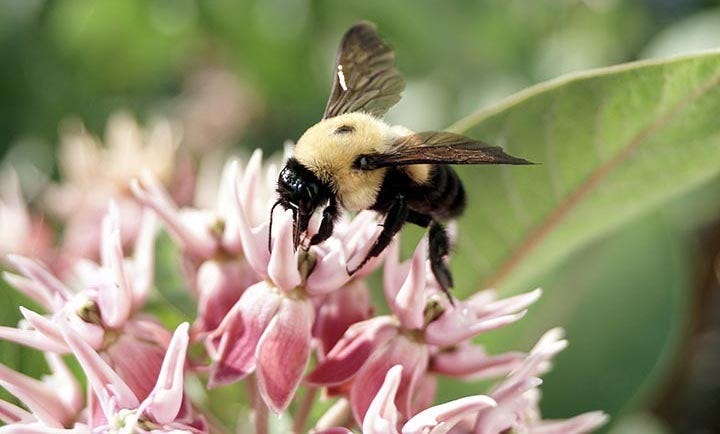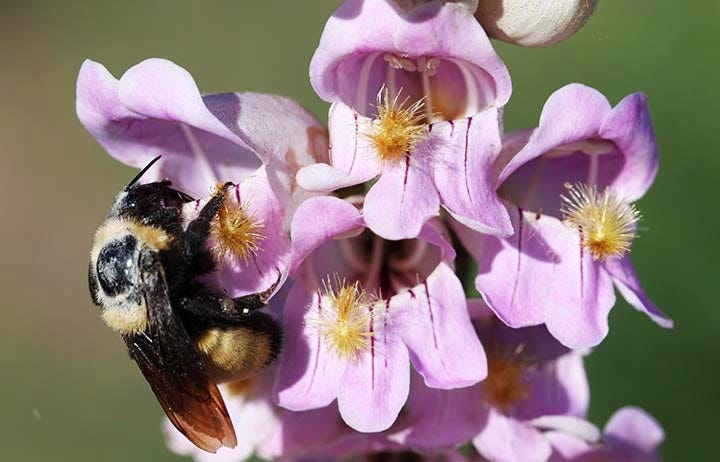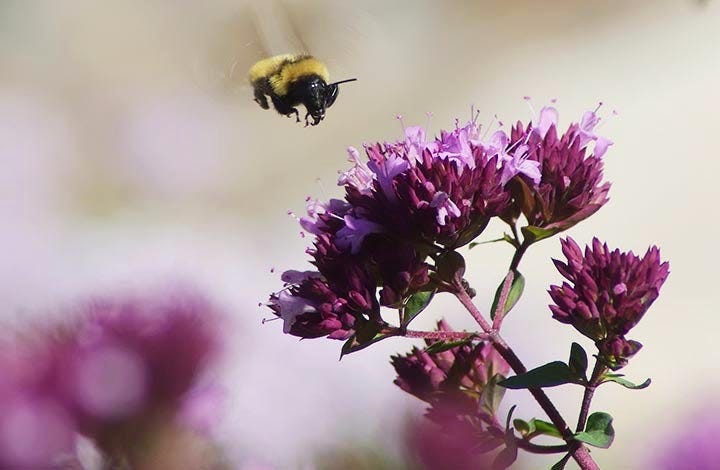Bees In The Garden - Our Most Important Pollinators
Did you know that honeybees are actually Old World insects, not native to the Americas? While the domesticated honeybee is the best-known bee, there are an estimated 4,000 species of native North American bees.
Bee populations are in decline, primarily because of the widespread use of a new generation of especially potent systemic insecticides and the loss of wild habitats.
It's essential that through our collective gardening efforts, we gardeners take on the essential mission of protecting their populations. Through the creation of beautiful and diverse gardens and landscapes, and by using organic gardening techniques, together, our passion for gardening can help protect our most important pollinators.
The Importance of the Bee
It is estimated that bees pollinate around 70% of the world's plants. Not just many of the fruit and vegetable crops that we eat, but also the wild plants in nature that depend on pollination to produce seeds and reproduce themselves.
Since terrestrial plants are in large part, the foundation of the planet's food chain upon which many animals depend, bees have an essential role in maintaining life on Earth. The health of bee populations is a direct reflection of the health of our ecosystems; they are like the proverbial "canary in the coal mine."
Bee Habitat
Bees need three things to create a habitat where they can live: nesting sites, water, and flowers. And they need a safe environment where no synthetic insecticides, herbicides, fungicides and chemical fertilizers are used. An organic garden is a cornerstone to create healthy habitats.
Nesting Sites:
- Unlike the social honey bee that lives in communal hives, most native bee species are solitary.
- They nest in the ground, in rock embankments and dry-stacked rock walls as well as in hollow plant stems, under small piles of brush and holes in trees.
- Make sure that your landscape has un-mulched bare ground where bees can dig their burrows.
- Don't use weed barrier, as this prevents a bee's access to the ground below.
Water:
- Birdbaths are commonly used by bees. Place a stone in the water where bees can walk to the water's edge and drink.
- Or create a muddy area by placing a drip emitter in a depression in the soil. (This will also attract butterflies.)
Flowers:
- Bees and flowers are dependent on each other. Bees visit the flowers to feed on sugar-rich nectar and gather protein-rich pollen (commonly known as "bee bread") to feed their young.
- In return, bees move pollen from flower to flower which creates seeds and allows the plants to complete their reproductive life cycle.
- See below for our tips for bee-friendly plants
Bee-Friendly Flowers For Every Season
Early Spring Bloomers
- Currant (Ribes)
- Oregon Grape (Mahonia)
- Three Leaf Sumac (Rhus trilobata)
- Willow (Salix)
Late Spring Bloomers
- Beardtongue (Penstemon) ⃰
- Beebalm (Monarda) ⃰
- Catmint (Nepeta)
- Clover (Trifolium)
- Lamb's Ear (Stachys)
- Lupine (Lupinus)
- Ornamental Onion, bulb types (Allium)
- Sage (Salvia)
Summer Bloomers
- Annual Bee Plant (Cleome)
- Black-Eyed Susan (Rudbeckia)
- Blazing Star or Gayfeather (Liatris)
- Boneset (Eupatorium)
- French hybrid lavender (Lavandula x intermedia) ⃰
- Milkweed (Asclepias)
- Ornamental Onion (Allium 'Millenium' )
- Prairie Clover (Dalea)
- Purple Coneflower (Echinacea)
- Russian Sage (Perovskia)
- Sage (Salvia)
- Sunflowers, perennial and annual (Helianthus)
Fall Bloomers
- Aster (Aster and Symphytrichitum)
- Goldenrod (Solidago)
- Hummingbird Mint or Hyssop (Agastache)
- Prairie Sage (Salvia azurea) ⃰
- Russian Sage (Perovskia)
Designing A Bee-Friendly Garden
- Plant a diverse selection of nectar and pollen-rich flowering plants that bloom throughout the growing season. A succession of flowers from early spring to late fall supports robust bee populations.
- Bees prefer blue, purple, and yellow flowers that have a sweet fragrance, but will also visit other colored flowers.
- Use double flowers (like common garden mums) sparingly. Flowers that have no center "eye" are unusable for bees and other insect pollinators.
- Plant in groups of the same flower species (groups of at least 5-7 plants is optimal) to maximize nectar and pollen availability while minimizing the travel distance needed to gather it.
- When planting shrubs and trees with separate male and female plants (dioecious species), be sure to plant more male plants as they are essential sources of protein-rich pollen as well as nectar.
- Plant as many native species as possible. Native bees will feed on both native and Old World plants, but often prefer native species.
- On the other hand, honeybees (which are actually Old World insects, not native to the Americas) feed on both native and Old World plants.
- Bumblebees especially like tubular flowers with wide openings and hooded flowers (like Penstemon, Foxglove, or Lupine) on which to feed.
Bumblebees Are VIPs: Very Important Pollinators
Bumblebees are remarkable pollinators that will out pollinate the common honey bee. Why? Because they can fly in colder temperatures, working earlier in the spring and later into the fall as well as earlier in the morning and later in the evening. They are faster workers than honeybees often visiting twice as many flowers in the same time period. And they can carry much more pollen in the pollen-collecting hairs on their back legs. And bumblebees are a vegetable gardener's best friend because they are "buzz pollinators" that actually shake the pollen loose in vegetable flowers like tomatoes, peppers, eggplants, and potatoes.
Learn more about the top plants for Bumblebees! Providing Habitat for Bumblebees: Gardening With A Big Buzz
Shop Flowers To Feed The Bees
© All articles are copyrighted by High Country Gardens. Republishing an entire High Country Gardens blog post or article is prohibited without permission. Please feel free to share a short excerpt with a link back to the article on social media websites, such as Facebook and Pinterest.






